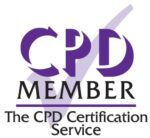Are you looking to define who your ideal client is?
Think about a trip to the grocery store with your family. Your mom is drawn to new multi-purpose dish soap that you would never take a second glance at. Your little brother is shoving dinosaur crackers down his throat before you even make it to the checkout. This is no coincidence.
This comes from years of companies testing, experimenting and marketing with precision to the exact people who they want to buy their products.
It’s SO easy to fall into a trap of trying to please everyone by making a product that they believe will appeal to the masses.
With over 7 billion people on the planet, the last worry on your mind should be if you can find clients or customers.
Instead, I need you to focus on building your tribe, and ensure that the exact people who you want to connect with are able to find you.
“Build something 100 people love, not something 1 million people kind of like.”
— Brian Chesky, Co-Founder & CEO, Airbnb
Prep-work
Demographics and psychographics are the perfect duo for understanding your target audience.
- Demographics help you figure out who they are – what their age is, gender, where they live.
- Psychographics digs into why they do what they do. Who are they really? What do their values and interests say about them?
To lay the foundations, write down the demographics that you’ll need to keep in mind before moving into the next steps. That’s it. Jot down only what is truly relevant to you.
Maybe location is not important, because you work worldwide, or age is no matter to you.
We far too often focus on demographics without making time to uncover psychographics. Psychographics are important because they can help you create more meaningful and resonant connections with your customers.
By understanding their values, interests, and attitudes, you can craft a message that speaks directly to them and develops strong relationships.
You can also use psychographics to tailor your products and services to their needs – ultimately creating better customer experiences.
It’s like uncovering the secret motivation behind everything your customers do.
Step one: the problems
We’re going to take a wild guess and assume you created your product or service because you want to make an impact on someone’s life, and you want to help solve someone’s problems.
That’s perfect.
In order to start telling your audience’s story, you gotta get back to your own.
Go back to when you first came up with your business idea, and really pinpoint the people whose problems you were trying to solve.
Working on someone else’s business? Time to craft the origin story together and understand the wider mission and values.
If you sell a product, envision this person using your product and sharing it with their friends.
You want your ideal customer to be someone who you’re excited to see use your products, get serious results, and share it with their own friends too.
These are some questions to get you started:
- What keeps them awake at night?
- What are they afraid of?
- What are their top frustrations?
- What do they desire the most?
They’re going to become your best friend, not by mistake, but by design.
Once you’ve decided on who your ideal client is, and you know them inside and out, then everything else will come much more naturally. You’ll find it much easier to decide on branding that aligns to your perfect customer, and you’ll find you create your messaging with a whole lot more fluidity.
Say bye-bye to writer’s block!
Step two: the questions
If you’re starting an online business, one of the huge factors you’ll be relying on is your copy.
A great copy allows you to sell your products and services when you are not even there.
You have to make sure that every single post you create on Instagram, the tweet you send, and the line you write on your site feels like it’s talking to one specific person who is following your journey.
The only way you can do that is to know EXACTLY who you’re speaking to.
This does not mean you have some general ideas about them, like they’re 25–40 and live in a condo. No. You should know them like you know your own BFF. Ask yourself questions like:
- Do they have their own language? What words do they commonly use?
- Who do they trust, and why?
- Is there a built-in bias to the way they make decisions?
- What are their biggest objections when it comes to your field?
- Who else is selling something similar to them, and how?
And the most important one:
Why have they not committed yet to find a solution to their problem?
That is truly the money-maker. Understanding this question can help you also understand their biggest hurdles.
Step three: the stories
I’m going to tell you straight if you’ve been having problems with selling your product, it’s likely because you don’t truly understand who you’re trying to sell it to.
You want to meet these people in real life.
The saddest thing I see is an unbelievably talented person, with a great product, not able to sell it because they’re missing out on this important point.
If right now, you only have a loose description with the details we outlined in the previous section, give a name to your target persona and create a story for them.
Block out 10 minutes and just introduce them to the world! Write their own hero story by sharing their current struggles, and what solution they are looking for.
Better yet, if you know someone in real life who fits the description, invite her out to coffee and pick her brain on her current obstacles in life.
Get to know them and use some of the questions above, and even get feedback on your products, branding, and mission statement.
Spend some time to get to know your new-found persona
The most important thing to remember is that you’re not going to appeal to everyone, and neither would you want to.
You want to find the tribe who LOVES you for who you are and raves about your products and services.
It is your job to give them a TON of value, love them hard, and get to know them really well. Dive deep into buyer psychology and start mapping who you are looking to serve.
These are the people who you’re going to be providing amazing value to, so it’s crucial to know their story in-and-out and address the perfect way to delve in and help them create their own yes.
Once you’ve pinpointed your ideal client, then your branding and content will connect with them SO easily, and they’ll be excited to be part of your journey.
“Get closer than ever to your customers. So close that you tell them what they need well before they realize it themselves.”
steve jobs
Ready to get started with positive impact marketing?
Set up power marketing systems build a marketing strategy that drives results, when you join our certification.
Develop an advanced set of marketing skills that drive more measurable results to any project and harness the power of psychology, purpose, storytelling, and impact to build trust in an increasingly skeptical world.
Take our certification, build your marketing plan and build your ultimate marketing toolkit.




